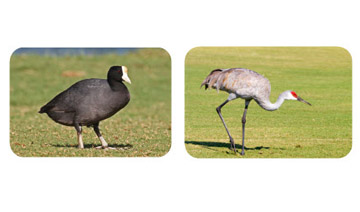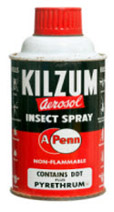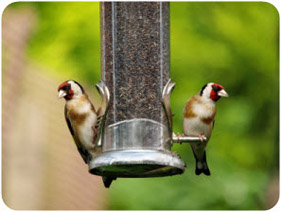Endangered Birds

Left to right: A Hawaiian Coot. Image courtesy of Dick Daniels, [CC-BY-SA 3.0], via Wikimedia Commons; A Mississippi Sandhill Crane.
From the Hawaiian coot to the Mississippi sandhill crane, America's birds are struggling. The United States government estimates that almost one-third of our country's 800 bird species are endangered, threatened or in serious decline. But why?

This is a baby Mississippi Sandhill Crane. Image courtesy of Michael Stone, [CC-BY-SA 3.0] , via Wikimedia Commons
Bird populations are in trouble for many reasons. Sometimes birds do not reproduce very often or have many young, and that makes it difficult to build up their numbers.

This can of Kilzum insect spray contains DDT.
Pollution is a problem, too. Before it was banned in the 1970s, the pesticide dichloro-diphenyl-trichloroethane, better known as DDT, caused birds to lay eggs with thin and weak shells. Many eggs were crushed before they could hatch.

This nest box has a predator guard to prevent some species from reaching the entrance hole.
Sometimes, new species move into a bird's area and take resources that the native birds need to survive.

This area has been logged, causing some birds to lose their habitat.
But the biggest problem affecting birds is habitat loss.

Cranes live in areas with adequate water sources.
A habitat is the local environment in which a specific organism, population or species lives. Animals' habitats include specific physical and chemical features that help animals meet their needs. These needs include food, water, shelter and places to build nests and raise young.

Sandwich terns live along the U.S. and Caribbean marine coasts.
When one or more of these things are not available, birds suffer. And unfortunately, birds cannot just move to a new kind of habitat. Can you imagine a bird that lives on the ocean trying to find food in the Appalachian Mountains?

The Blackwater National Wildlife Refuge provides a home to many species. Image courtesy of U.S. Fish and Wildlife Service
Instead, if we want to protect birds, we need to improve the habitats where they live. Conservation groups are working to do this on a large scale, by setting up wildlife preserves, cleaning up pollutants, and actively managing wildlife populations.

Goldfinches benefit from birdfeeders provided by everyday people.
Everyday citizens—and even young adults—can make a difference too by helping to improve bird habitats and providing the food, water and shelter that they need to survive.